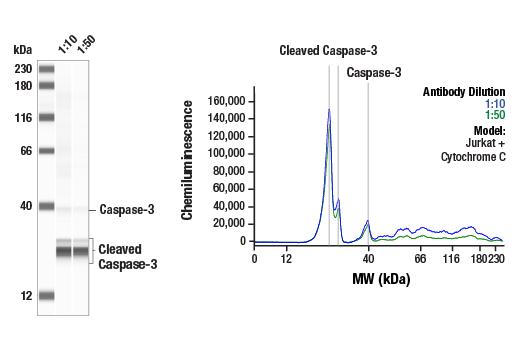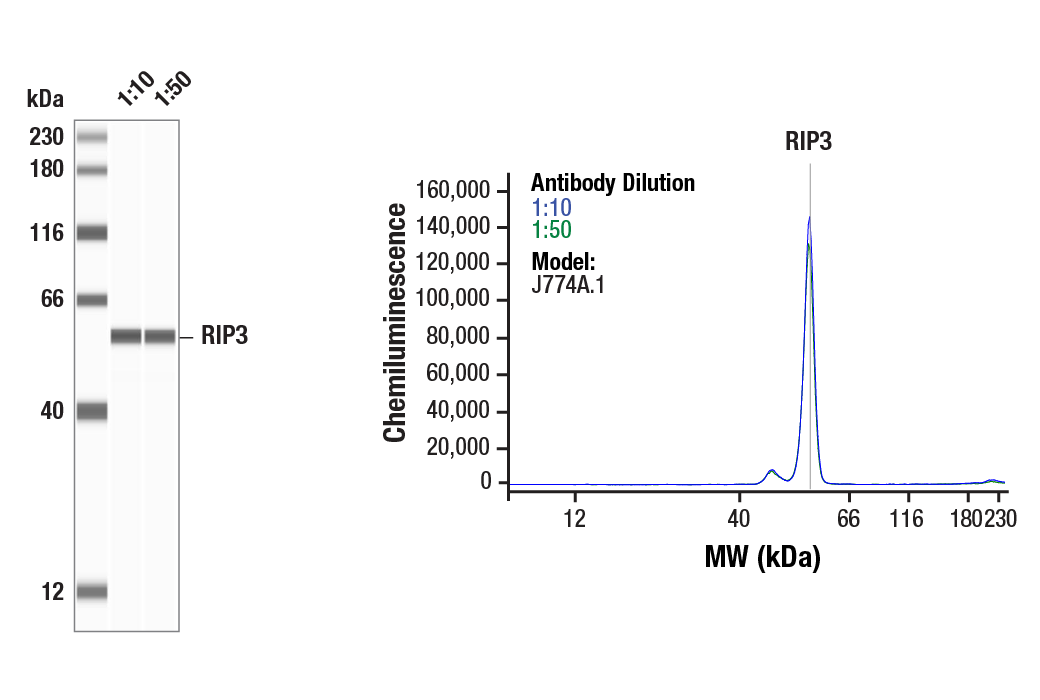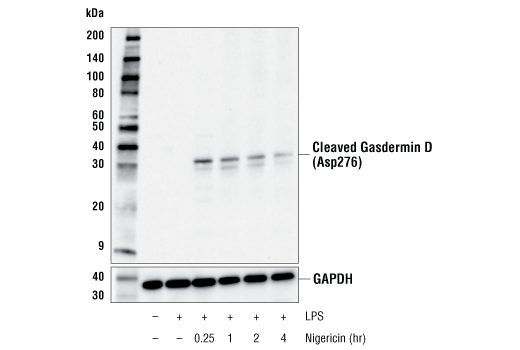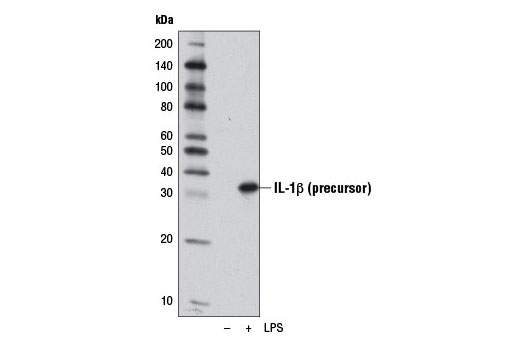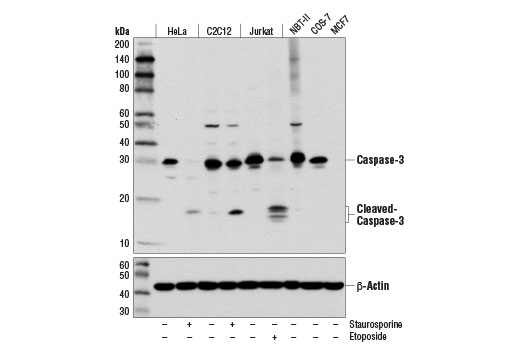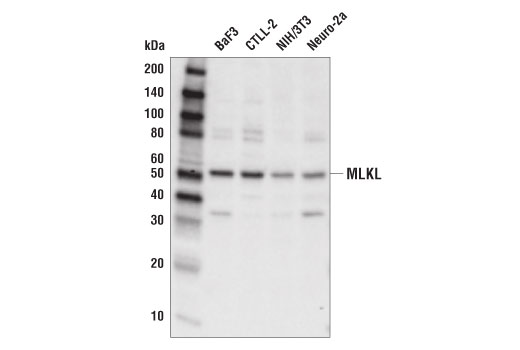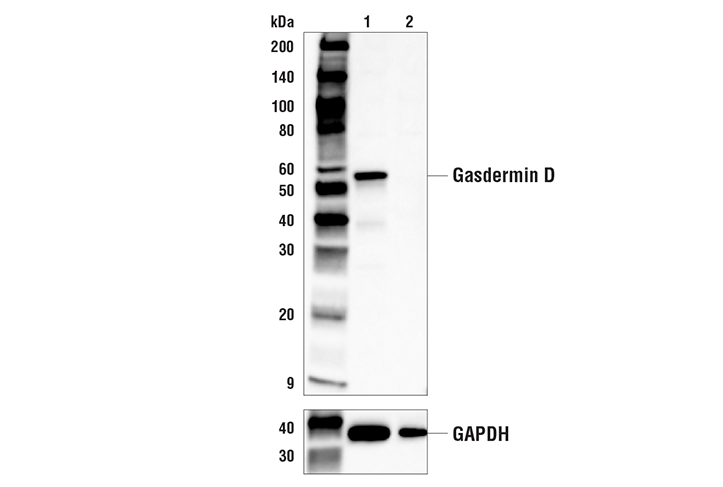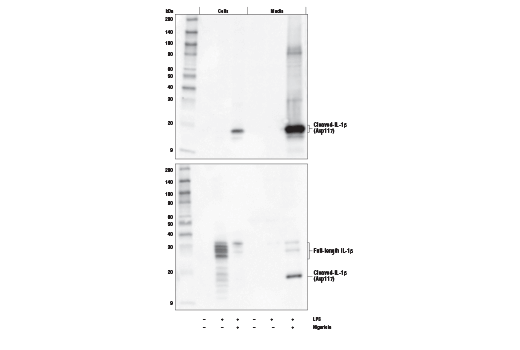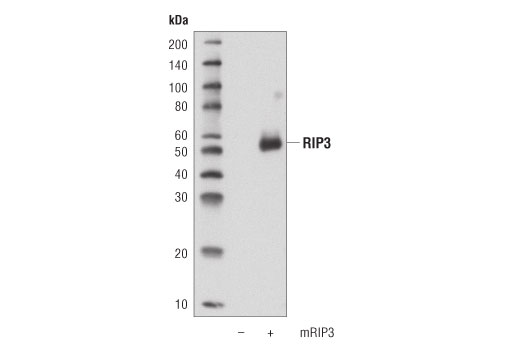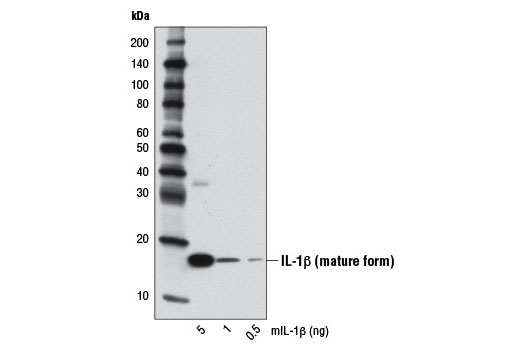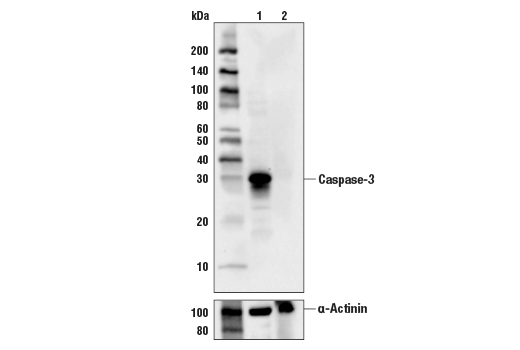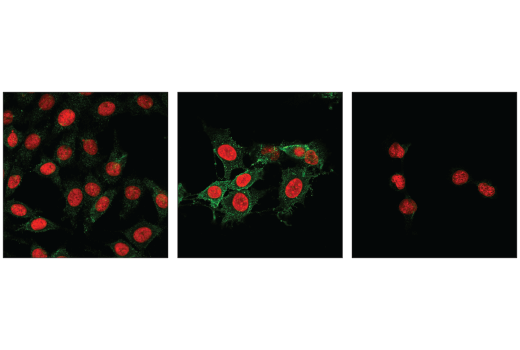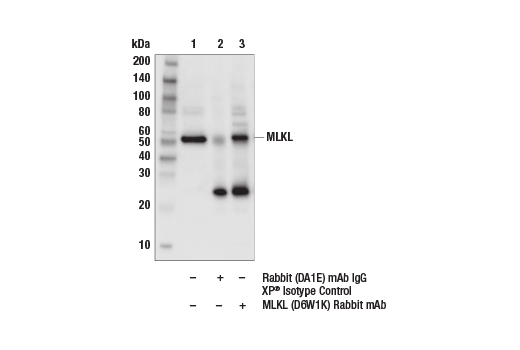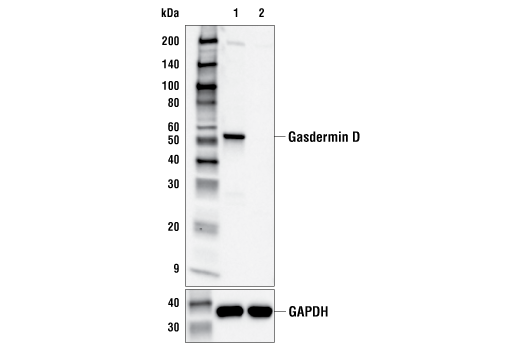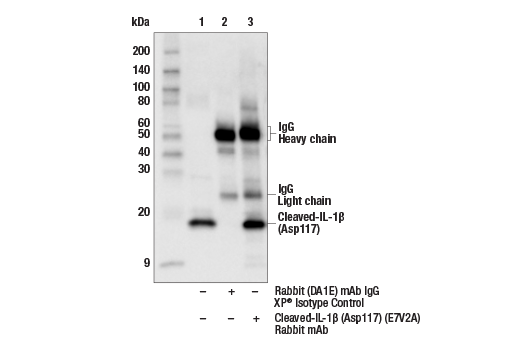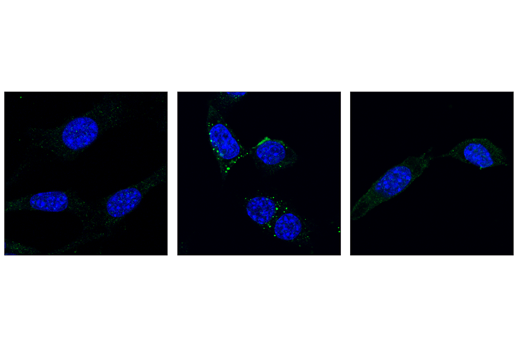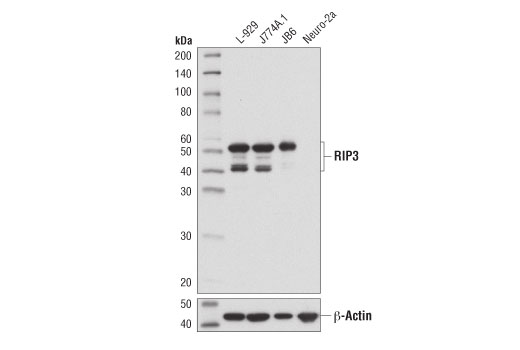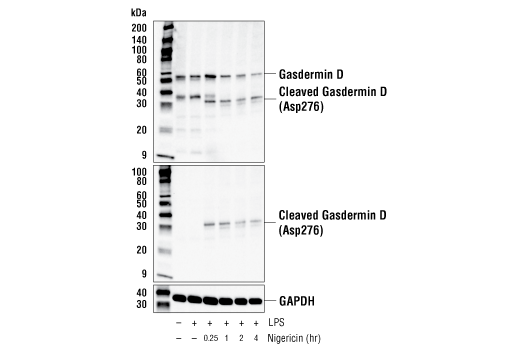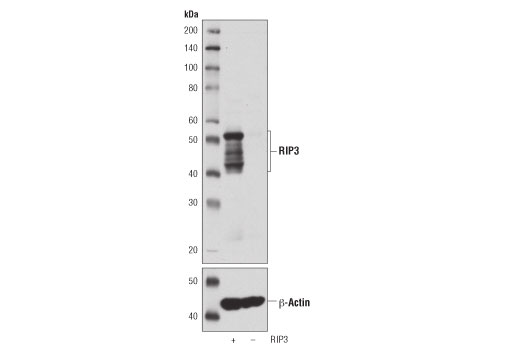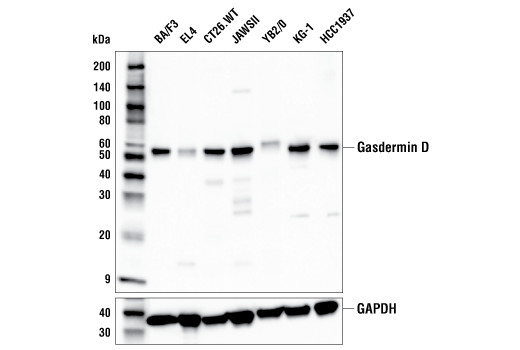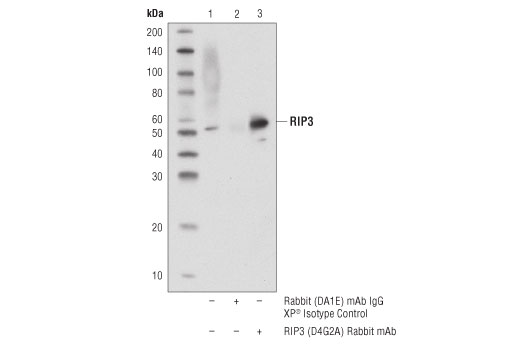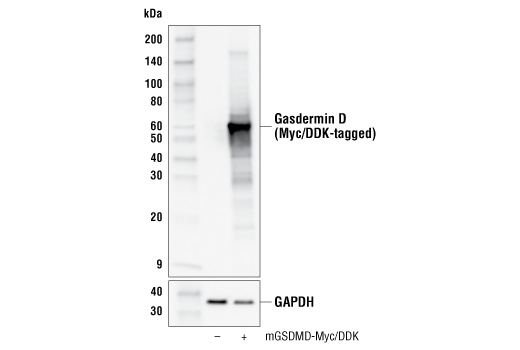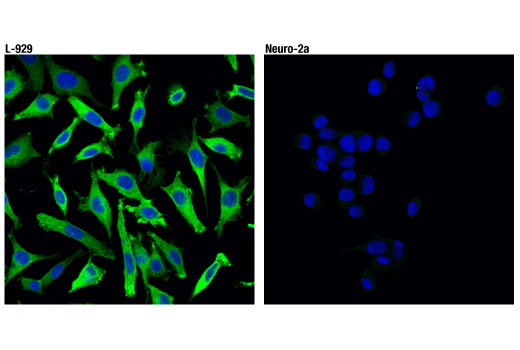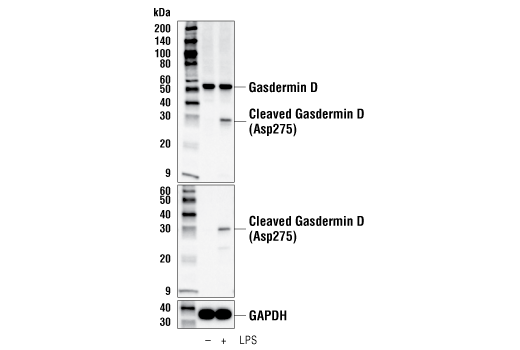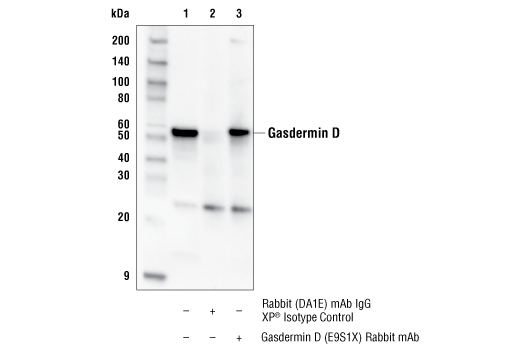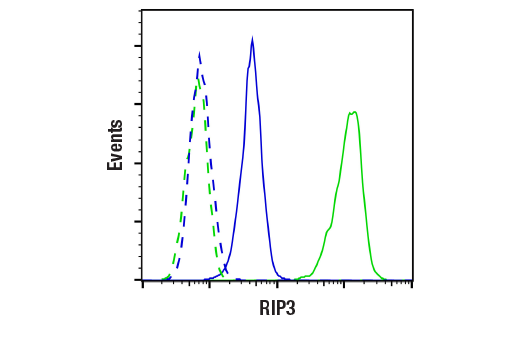| Product Includes | Product # | Quantity | Mol. Wt | Isotype/Source |
|---|---|---|---|---|
| MLKL (D6W1K) Rabbit mAb | 37705 | 20 µl | 54 kDa | Rabbit IgG |
| Phospho-MLKL (Ser345) (D6E3G) Rabbit mAb | 37333 | 20 µl | 54 kDa | Rabbit IgG |
| Caspase-3 (D3R6Y) Rabbit mAb | 14220 | 20 µl | 35, 19, 17 kDa | Rabbit IgG |
| Phospho-RIP3 (Thr231/Ser232) (E7S1R) Rabbit mAb | 91702 | 20 µl | 46-62 kDa | Rabbit IgG |
| Gasdermin D (E9S1X) Rabbit mAb | 39754 | 20 µl | 53, 30 kDa | Rabbit IgG |
| Cleaved Gasdermin D (Asp276) (E3E3P) Rabbit mAb | 10137 | 20 µl | 31 kDa | Rabbit IgG |
| IL-1β (D3H1Z) Rabbit mAb | 12507 | 20 µl | 17,31 kDa | Rabbit IgG |
| Cleaved-IL-1β (Asp117) (E7V2A) Rabbit mAb | 63124 | 20 µl | 17 kDa | Rabbit IgG |
| RIP3 (D4G2A) Rabbit mAb | 95702 | 20 µl | 46-62 kDa | Rabbit IgG |
| Anti-rabbit IgG, HRP-linked Antibody | 7074 | 100 µl | Goat |
Please visit cellsignal.com for individual component applications, species cross-reactivity, dilutions, protocols, and additional product information.
Description
The Mouse Reactive PANoptosis Antibody Sampler Kit provides an economical means of detecting the activation of PANoptosis in mouse samples. The kit includes enough antibodies to perform two western blot experiments with each primary antibody.
Storage
Background
Programmed cell death (PCD) plays important roles in organismal development and immune responses. There are three major PCD pathways: apoptosis, pyroptosis, and necroptosis. Apoptosis is a non-inflammatory cell death and is characterized by a series of proteolytic cleavage, beginning with the initiator caspases (caspases-8/9), then the executioner caspases (caspases-3/6/7), followed by cleavage of substrate proteins to drive apoptotic cell death (1,2). During pyroptosis, caspase-1 is proteolytically activated through a protein complex called inflammasome, then the activated caspase-1 can cleave Gasdermin D (GSDMD), IL-1β, and IL-18. The freed GSDMD N-terminal domains from the cleavage form pores in the plasma membrane to drive pyroptotic cell lysis and release of the cleaved and matured IL-1β and IL-18, as well as damage-associated molecular patterns (DAMPs) (3,4). The key steps in necroptosis include the receptor-interacting protein kinase 3 (RIPK3)-dependent phosphorylation of mixed lineage kinase domain-like protein (MLKL), translocation of phosphorylated MLKL to plasma membrane, and disruption of plasma membrane integrity (5,6). In contrast to the non-inflammatory nature of apoptosis, both pyroptosis and necroptosis are proinflammatory (7). While early studies of these PCD pathways focused on their distinct individual features and underlying mechanisms, recent findings point to crosstalk and redundancies among these processes under certain conditions, where the three pathways are activated, not independently of each other, and compensatory responses occur when one pathway is blocked. This new form of PCD with key features of pyroptosis, apoptosis, and/or necroptosis has been termed PANoptosis (8,9). PANoptosis is a coordinated cell death pathway driven by a cytoplasmic protein complex named the PANoptosome, whose components provide scaffold and catalytic functions to engage pyroptosis, apoptosis, and/or necroptosis (10,11).
- Hengartner, M.O. (2000) Nature 407, 770-6.
- Zimmermann, K.C. et al. (2001) Pharmacol Ther 92, 57-70.
- Shi, J. et al. (2017) Trends Biochem Sci 42, 245-254.
- Rathinam, V.A.K. and Chan, F.K. (2018) Trends Mol Med 24, 304-318.
- Christofferson, D.E. and Yuan, J. (2010) Curr Opin Cell Biol 22, 263-8.
- Vandenabeele, P. et al. (2010) Nat Rev Mol Cell Biol 11, 700-14.
- Nozaki, K. et al. (2022) Annu Rev Immunol 40, 469-498.
- Malireddi, R.K.S. et al. (2019) Front Cell Infect Microbiol 9, 406.
- Zheng, M. and Kanneganti, T.D. (2020) Immunol Rev 297, 26-38.
- Christgen, S. et al. (2020) Front Cell Infect Microbiol 10, 237.
- Samir, P. et al. (2020) Front Cell Infect Microbiol 10, 238.
Background References
Trademarks and Patents
使用に関する制限
法的な権限を与えられたCSTの担当者が署名した書面によって別途明示的に合意された場合を除き、 CST、その関連会社または代理店が提供する製品には以下の条件が適用されます。お客様が定める条件でここに定められた条件に含まれるものを超えるもの、 または、ここに定められた条件と異なるものは、法的な権限を与えられたCSTの担当者が別途書面にて受諾した場合を除き、拒絶され、 いかなる効力も効果も有しません。
研究専用 (For Research Use Only) またはこれに類似する表示がされた製品は、 いかなる目的についても FDA または外国もしくは国内のその他の規制機関により承認、認可または許可を受けていません。 お客様は製品を診断もしくは治療目的で使用してはならず、また、製品に表示された内容に違反する方法で使用してはなりません。 CST が販売または使用許諾する製品は、エンドユーザーであるお客様に対し、使途を研究および開発のみに限定して提供されるものです。 診断、予防もしくは治療目的で製品を使用することまたは製品を再販売 (単独であるか他の製品等の一部であるかを問いません) もしくはその他の商業的利用の目的で購入することについては、CST から別途許諾を得る必要があります。 お客様は以下の事項を遵守しなければなりません。(a) CST の製品 (単独であるか他の資材と一緒であるかを問いません) を販売、使用許諾、貸与、寄付もしくはその他の態様で第三者に譲渡したり使用させたりしてはなりません。また、商用の製品を製造するために CST の製品を使用してはなりません。(b) 複製、改変、リバースエンジニアリング、逆コンパイル、 分解または他の方法により製品の構造または技術を解明しようとしてはなりません。また、 CST の製品またはサービスと競合する製品またはサービスを開発する目的で CST の製品を使用してはなりません。(c) CST の製品の商標、商号、ロゴ、特許または著作権に関する通知または表示を除去したり改変したりしてはなりません。(d) CST の製品をCST 製品販売条件(CST’s Product Terms of Sale) および該当する書面のみに従って使用しなければなりません。(e) CST の製品に関連してお客様が使用する第三者の製品またはサービスに関する使用許諾条件、 サービス提供条件またはこれに類する合意事項を遵守しなければなりません。
